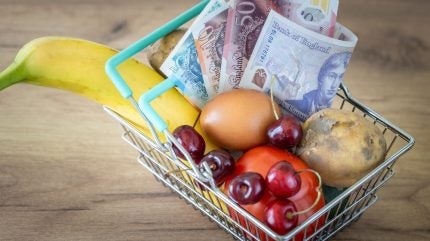
UK grocery price inflation rose to 5.2% in the four weeks to 13 July—the strongest pace since January 2024, according to market research firm Worldpanel by Numerator.
The latest figures suggest household grocery bills could climb by around £275 this year if shopping habits stay the same.

Discover B2B Marketing That Performs
Combine business intelligence and editorial excellence to reach engaged professionals across 36 leading media platforms.
Increased cost of living hits shopping budgets
With the average household spending about £5,283 annually at supermarkets, the rise in grocery inflation could raise yearly bills by £275.
Nearly two‑thirds of households report being “very concerned” about grocery costs, and many are adjusting their spending habits.
Staple items such as meat, milk, eggs and cheese are contributing significantly to the price surge.
Own-label products and simpler meals gain popularity
Shoppers are turning increasingly to supermarket own‑label goods, with sales rising 5.6% compared with 4.9% growth for branded products over the same period.

US Tariffs are shifting - will you react or anticipate?
Don’t let policy changes catch you off guard. Stay proactive with real-time data and expert analysis.
By GlobalDataFacing higher prices, consumers are preparing fewer‑ingredient meals—around 70% of dinners now include fewer than six components.
Retailer sales reflect shifting consumer behaviour
Grocery sales value rose 5.4% year‑on‑year in the four weeks to July 13, helped in part by warm weather boosting categories such as ice cream and sorbet, which climbed by about 33%.
Among supermarkets, Tesco led with a 7.1% sales increase and a 28.3% market share; Sainsbury’s grew 5.3%, while discounters Lidl and Aldi, plus online grocer Ocado, posted double‑digit growth—Lidl reaching a record 8.3% share.
Asda and Co‑op saw declines in sales.
What this means for consumers and retailers
Grocery inflation, a key measure of food price rises, is a central element of the broader cost of living crisis. Rising labour and regulatory costs for retailers are feeding into prices, making low‑income households particularly vulnerable.
The shift to own‑label goods and simpler meals highlights consumer adaptation strategies. For supermarkets, the challenge lies in balancing margins with affordability to retain customers while under cost pressure.
The rise in grocery inflation to 5.2% represents a notable increase from June’s 4.7% rate.
If sustained, the higher prices could further strain household budgets and influence shopping patterns, reinforcing the popularity of discounters and value ranges.



